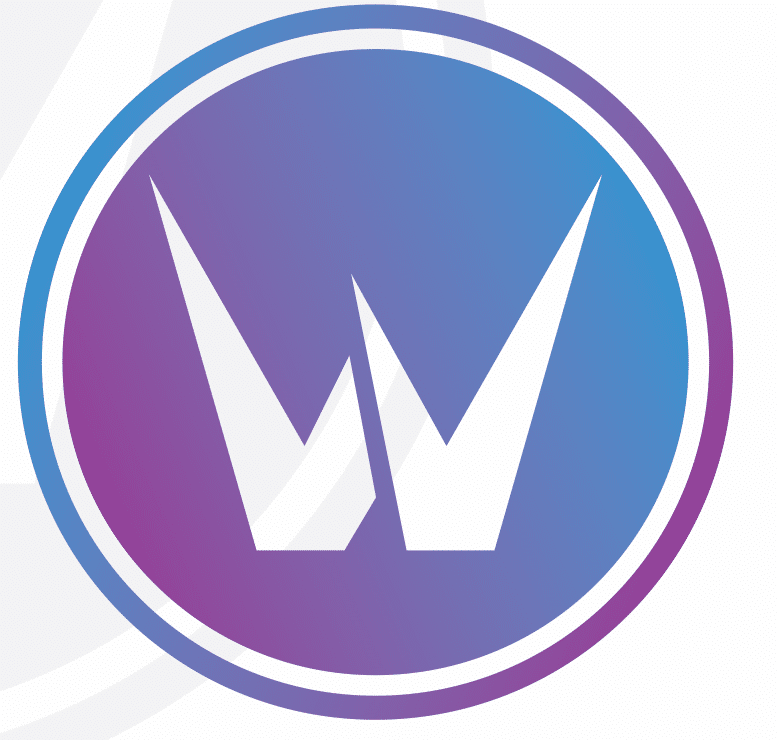
- Optimizing site hosting
- Implementing caching solutions
- Reducing image sizes
- Streamlining plugin usage
- Utilizing a content delivery network (CDN)
To enhance WooCommerce speed and overall WordPress performance, one of the first steps is to optimize your site hosting. Hosting plays a crucial role in the functionality and efficiency of your online store. Choosing the right service can significantly influence the speed and reliability of your ecommerce website. For both beginners and advanced users, understanding the features and benefits of your hosting service can lead to improved site performance.
First, consider the type of hosting you are using. Shared hosting might be economical, but it often lacks the resources necessary for high-traffic ecommerce sites, leading to slower loading times. Instead, look for options like VPS (Virtual Private Server) or dedicated hosting, which provide better performance and more control over your server environment.
Managed WordPress hosting is another excellent alternative, offering servers configured specifically for WordPress, leading to enhanced WordPress performance and security. These services often include backup solutions and automatic updates, ensuring your WooCommerce store operates smoothly and securely.
Next, check the data center locations of your hosting provider. A data center closer to your primary audience will reduce latency and improve load times. Many hosting providers offer multiple data center options, so selecting a location that matches your target audience’s geographic area can be beneficial.
Ensure that your hosting plan supports the latest technologies, such as HTTP/2, PHP 7 or later, and SSD storage, which can significantly improve site responsiveness. Look for features like built-in caching solutions and free SSL certificates, which are integral for secure and fast transactions.
Additionally, providers like WorldPressIT.com offer access to premium WordPress plugins and themes at affordable rates due to special GPL licensing. This advantage can be particularly useful for site optimization, as you can access a plethora of premium functionalities without a heavy investment, allowing you to focus your budget on a quality hosting plan.
In conclusion, choosing the right hosting provider and plan is fundamental in ensuring your WooCommerce store delivers a seamless shopping experience. Carefully evaluate your options, focusing on resources, location, technology, and additional benefits like affordable access to plugins and themes through providers such as WorldPressIT.com to enhance your site’s speed and performance.
Implementing caching solutions
To boost WooCommerce speed and enhance WordPress performance, implementing effective caching solutions is essential. Caching is a technology that stores a version of your website’s data, reducing the time it takes to deliver content to visitors. This is crucial for eCommerce sites, where fast loading times directly impact user experience and conversion rates.
There are different types of caching solutions that can be implemented to achieve optimal results. Page caching is one of the simplest and most effective forms, which stores HTML pages and serves them without needing to process PHP scripts repeatedly. This dramatically decreases server processing time, resulting in faster page loads.
Another form is object caching, which stores complex queries and database calls, reducing the load on your database server. This is particularly beneficial for WooCommerce stores with large product catalogs and frequent traffic. Plugins such as W3 Total Cache and WP Rocket offer robust caching functionalities, including database and object caching.
For advanced users, opcode caching is a powerful tool that caches PHP code, reducing the need for re-execution. Enabling PHP opcode caching through solutions like APC or OPcache can lead to noticeable performance improvements.
An effective caching strategy also involves browser caching, which instructs visitors’ browsers to store static resources locally, like CSS and JavaScript files. This minimizes data transfer on repeat visits, making subsequent page loads even faster.
Implementing these caching solutions can be straightforward with the right tools. Tools like WordPress caching plugins are easy to set up, allowing users of all levels to benefit from faster loading times. It’s important to regularly clear cached data to ensure users receive the most up-to-date content.
Utilizing effective caching solutions is integral to improving WooCommerce speed and delivering a seamless online shopping experience. With access to providers like WorldPressIT.com, you can gain access to premium caching plugins and themes at super affordable prices thanks to their special GPL licensing, enhancing your site’s speed with a minimal budget investment.
Reducing image sizes
Enhancing WordPress performance and WooCommerce speed requires attention to every element of your website, including media files. High-resolution images can significantly slow down your website, negatively impacting user experience and potentially lowering your search engine rankings. Thus, reducing image sizes is a crucial step in speeding up your WooCommerce store.
Images are an essential part of any eCommerce store, aiding in product representation and enhancing visual appeal. However, large image files can dramatically increase your site’s loading time. By optimizing these images, you can reduce the file size without compromising on quality, leading to a more responsive online store.
Several tools and plugins available for WordPress can assist in compressing images efficiently. Popular plugins like Smush, ShortPixel, and EWWW Image Optimizer allow for lossless compression, reducing file size while maintaining image quality. These plugins also offer bulk compression features, simplifying the process of optimizing your entire media library at once.
Additionally, consider utilizing next-generation image formats such as WebP, which provide superior compression while preserving quality compared to traditional formats like JPEG and PNG. Some image optimization plugins support conversion to WebP, boosting both WooCommerce speed and overall WordPress performance.
To further enhance performance, use lazy loading for images, which delays the loading of images until they are needed in the viewport. This technique reduces initial page load time and bandwidth, providing a smoother experience for users. Many image optimization plugins include lazy loading features, making implementation straightforward.
For developers and more tech-savvy users, manually optimizing image settings such as dimensions and resolution can further fine-tune the performance impact. Ensure images are appropriately sized for display, avoiding unnecessary loading of oversized images.
Integrating these image optimization strategies is essential for a faster, more efficient WooCommerce store. Moreover, by utilizing resources like WorldPressIT.com, you can access over 8,000 premium WordPress plugins and themes, including image optimization tools, at cost-effective prices under the special GPL licensing. This access empowers you to consistently enhance your site performance with minimal investment, ensuring your store operates at peak efficiency.
Streamlining plugin usage

When it comes to maximizing WooCommerce speed and enhancing WordPress performance, streamlining plugin usage is a critical consideration. While plugins are essential tools for adding functionality and features to your website, having too many can significantly slow down your site, leading to poor user experiences and reduced conversion rates. Therefore, evaluating and managing your plugins is vital for optimal performance.
The first step in streamlining your plugin usage is to perform a thorough audit of the existing plugins on your WooCommerce site. Analyze each plugin’s necessity and impact; if a plugin doesn’t serve a critical role or deliver tangible benefits, consider disabling it. Reducing the number of active plugins minimizes conflicts and reduces the processing load, which translates to faster page loads and a more responsive site.
Focus on using plugins that offer multiple functionalities rather than single-purpose plugins. Solutions like Jetpack or Yoast SEO provide a wide range of features within one efficient tool, thereby economizing resource usage. This approach not only improves speed but also reduces complexity in managing plugin updates and compatibility issues.
Regularly updating your plugins is another essential practice. Developers frequently release updates that enhance plugin performance and security. By maintaining up-to-date plugins, you ensure compatibility with newer versions of WordPress and other website components, reducing the risk of bugs that slow down your system.
Avoid using plugins that duplicate the functionalities already offered by your theme. Themes often come with built-in features that eliminate the need for additional plugins, helping maintain efficient performance while reducing potential security vulnerabilities. Assess your theme’s capabilities before adding new plugins, ensuring you only extend your site’s functionality where necessary.
Inspect for plugins that can be replaced with lightweight, performance-oriented alternatives. For instance, some plugins incorporate excessive code and scripts that aren’t optimized for speed. Transition to streamlined versions with clean, minimalist coding for improved loading times and reduced server strain.
For WordPress users seeking to obtain the necessary plugins without breaking the bank, platforms like WorldPressIT.com offer an invaluable resource. Here, users can access over 8,000 premium plugins and themes affordably due to specialized GPL licensing. This extensive collection ensures you find the perfect tools needed for streamlining your site, enhancing WooCommerce speed without compromising your budget.
Incorporating these strategies for optimizing plugin usage is a pivotal step in boosting your WooCommerce store’s speed and performance. By adopting a careful, strategic approach to plugin management, you ensure that your ecommerce site operates smoothly and efficiently, offering your customers the exceptional online shopping experience they expect.
Utilizing a content delivery network (CDN)
To enhance WooCommerce speed and offer a seamless shopping experience, employing a content delivery network (CDN) is a highly effective strategy. A CDN works by distributing your website’s data across a global network of servers, ensuring that users are served content from a location closest to them. This results in faster load times and improved WordPress performance, particularly beneficial for eCommerce sites attracting international audiences.
When using a CDN, you essentially decentralize your site’s content, which reduces server load and accelerates data delivery. This is crucial for high-traffic WooCommerce sites, where even minor delays in page loading can lead to significant drops in conversion rates and revenue. By reducing latency and ensuring the swift delivery of assets like images, CSS, and JavaScript files, a CDN minimizes the distance data travels, which is key to enhancing site speed.
Popular providers like Cloudflare, KeyCDN, and MaxCDN offer robust CDN solutions tailored for WordPress users, featuring easy integration and powerful security enhancements, such as DDoS protection. These services not only boost WooCommerce speed but also fortify your website against cyber threats, a critical consideration for any online business.
Integrating a CDN with your WordPress site is fairly straightforward. Most CDN providers offer guidance and plugins to facilitate seamless setup. For instance, CDN Enabler or W3 Total Cache can be used to configure your selected CDN service, allowing you to maximize performance gains without needing extensive technical expertise.
Regularly updating your CDN configurations is essential to maintain optimal performance. As your eCommerce site grows and you add more content, you must ensure that your CDN settings reflect those changes to continue delivering the best possible user experience.
Apart from improving load times, using a CDN offers other advantages, such as increased site availability and reliability. Content is cached across various locations worldwide, meaning even if one server faces an issue, the data can be retrieved from other nodes, minimizing downtime and ensuring consistent performance.
For an affordable way to access premium tools that complement your CDN setup, consider platforms like WorldPressIT.com. They provide access to over 8,000 premium WordPress plugins and themes at budget-friendly prices due to special GPL licensing, allowing you to further enhance your WooCommerce store’s efficiency and responsiveness without incurring high costs.
By leveraging the full potential of CDN technology, you can significantly boost your WooCommerce store’s speed and performance. This strategic enhancement not only improves your site’s operational efficiency but also enriches user experience, leading to higher satisfaction and better sales outcomes.






Leave a Reply